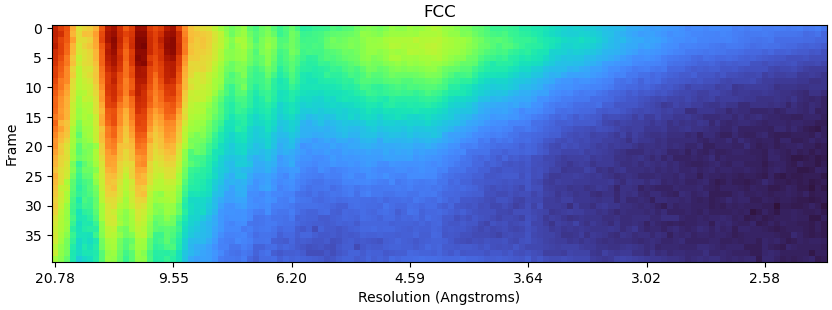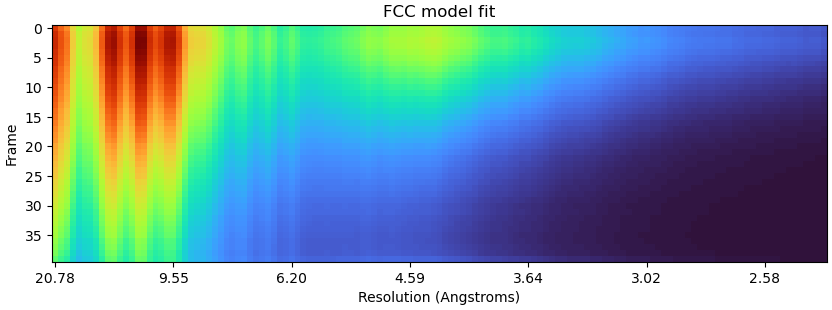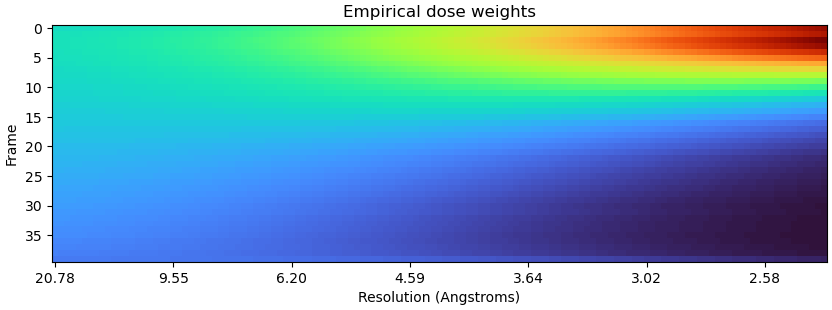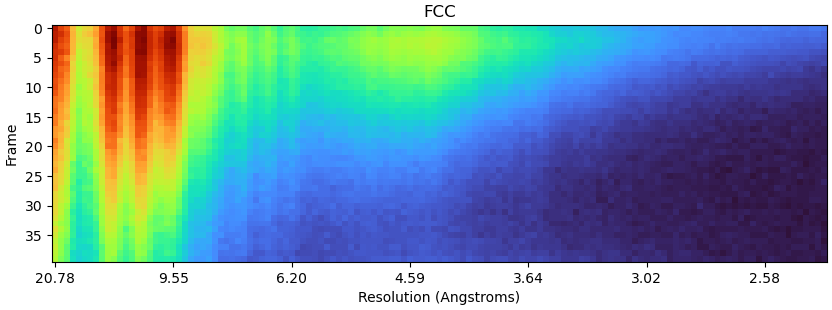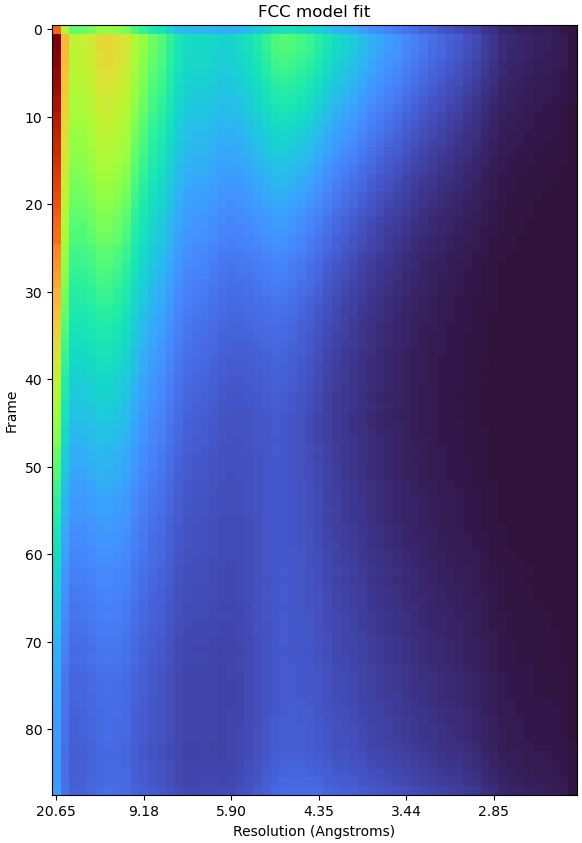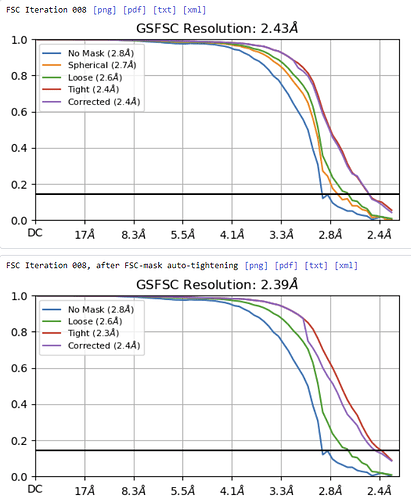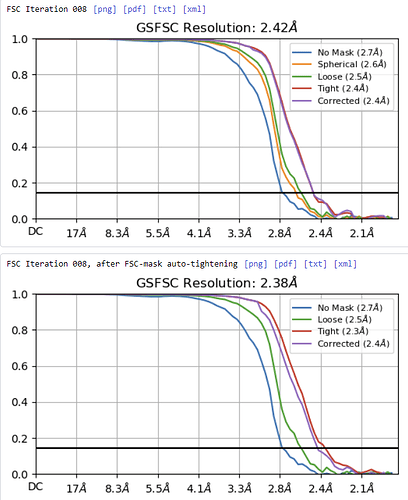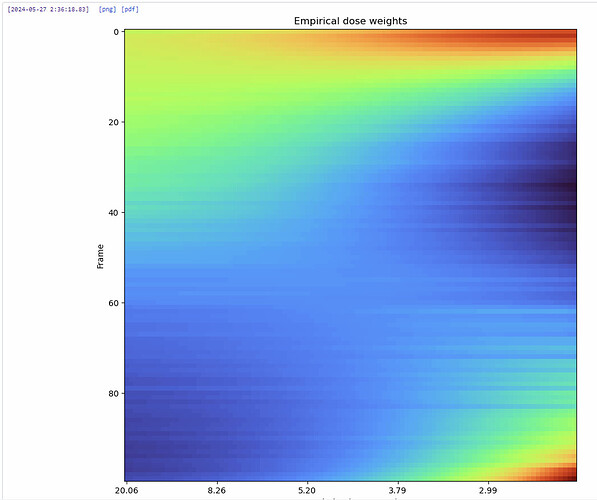I haven’t tried RBMC after local motion, so at least in my case that isn’t it
Hi Harris, I tried apply trajectories, removing the dose weights slot from the low-level inputs, and setting the dose in the input like so:
This did not work - refinement of the resulting particle set gave a 9Å reconstruction, much worse than the original non-dose-weighted particle set (4.4Å), and considerably worse than the RBMC particle set with empirical dose weights (3.0Å). The refinement of the particle set going into RBMC was 2.9Å.
What am I doing wrong in apply trajectories? Should I leave the dose weights in the inputs, but turn off “apply exposure weighting” and still set “override e/Å2/frame”? If so I think maybe these options should be renamed so it is more obvious what they mean - maybe something like “apply empirical dose weights”? Something that clearly distinguishes between the empirical dose weights and the Grant/Grigorieff curve. Also I think it would be worth stating somewhere in the log which dose weights, if any, are being applied, so it is clear what is going on.
Cheers
Oli
Hi Oli,
The dose override looks like you input total dose, instead of by frame. Unless I misunderstood what is meant by frame here - I assume dose per frame in the original movie.
Ah you are absolutely right! I read it as total dose… ![]() Thanks!!
Thanks!!
I still think the slider should perhaps be clarified - the name of it is “apply exposure weighting”, which could refer to multiple things (RBMC empirical dose weights or Grant/Grigorieff filtering), while the tooltip suggests it refers specifically to the empirical dose weights from RBMC
Out of curiosity, what’s the difference between the 4.4Å set (“original”) and the 2.9Å set (“going into RMBC”)?
4.4Å was with extraction from the non-doseweighted mics out of patch motion (as a control)
Ok, so now I have Apply Trajectories working, I have a refinement with RBMC trajectories, but Grant/Grigorieff dose weighting, and the resolution is 2.9, indicating that the aberrant empirical dose weights were degrading resolution somewhat.
Hi Oli, sorry for the delay. It sounds like you’ve gotten the issues with apply trajectories resolved (I agree that the ergonomics of that job could be improved - it’s not even documented in the guide yet). Thank you for confirming that the empirical dose weight fit in this case is bad enough to be harmful relative to Grant and Grigorieff. Given that the first frame was chosen as the best for high frequency data, I’m not surprised - the Grant and Grigorieff curve is probably more accurate than this one.
So I did a similar test where I took this dataset:
and I tested two refinements:
- Had both experimental dose weighting, and new trajectories - went from 2.17 to 1.99 Å
- Had just new trajectories - went from 2.17 to 2.07 Å
So even with the issue there, experimental dose weighting still had a positive impact. That was on gold grids, with 2.4 e/A2/frame.
Maybe this is fixed in 4.4.1? (Not in patch notes? I had the same - but very subtle - late frame weighting issues as reported here running with 4.4.0…)
This is a helical dataset, I used “balanced” preset for calculating hyperparameters. Motion tracks look good (believable):
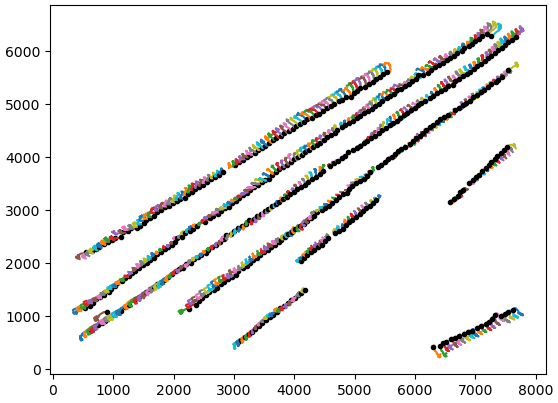
Except for that odd kink at the bottom right filament. But output particles look nice, so will see what the reconstruction looks like afterwards… (it’s still running right now)…
We didn’t do anything related to this issue in 4.4.1, but the phenomenon does not always occur. @rbs_sci did you see the discussed phenomenon on this same dataset in v4.4?
A run should have finished this morning on a dataset which shows it in 4.4.0. Trying a re-run in 4.4.1, will check as soon as I get in.
edit:
I was trying to post this last night, but fell asleep just before it finished… ![]()
OK, previous dataset was RBMC’d in 4.4.0, gave these plots:
Note the unsubtle higher weight in the penultimate frame all the way through the Fourier shells.
Now in 4.4.1:
The penultimate frame is still slightly upweighted, but it is much more subtle this time.
Elsewise, the FCC and model fit are comparable between the two. Parameters for calculation were the same.
Stochastic numerical divergence on the GPU?
(With re-running the same job)
I haven’t tried simply re-running the jobs showing the issue…
Another thing to note: the subset of micrographs chosen for dose weight estimation is different from run-to-run, in general. Random movies are chosen until the total particle count reaches the value set by the “Target number of particles” parameter.
Interesting. Maybe we should try using a curated set of micrographs for training, maybe there is something about the specific micrographs that is causing the issue when we try to generalize.
I just encountered the same issue with a smallish particle (~90 kDa) with non-perfect C2 symmetry on CryoSPARC v4.4.1. Used Extensive hyperparameter search with 50k particles and dose weights estimation with 80k ptcls. Here are the RBMC dose weighting optimization outputs:
HP optimization trajectories:
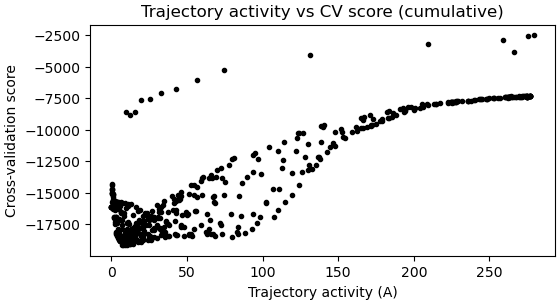
NU refine FSCs before RBMC:
NU refine FSCs after RBMC:
Hope this could help to figure out the issue.
EDIT:
Looking at the FCC plots, it seems that the correlation across the mid to high frequencies first declines and then starts to increase as the low frequency signal disappears due to damage. Could this be due to some kind of normalization?
Best wishes,
Rado
Hi @Rado, your plots look good / normal, with the exception of the late frame high frequency correlation issue. I don’t have a major update on this yet, but we’re aware of it and plan to fix it in the future.
Wondered if you have any updates to share regarding progress with this issue?
Thanks. ![]()
A bit RBMC run is about 50% complete but I’m debating stopping it and recalculating the weighting to see if I can get rid of this over-weighting:
Not as extreme as some examples above so I am of a mind to leave it and see what happens, then re-run as required. I’m loath to pull the stack out to RELION for Bayesian polishing as the full dataset is pretty big and EER handling in RELION pretty slow.
Same problem coming up here for us. I just had one with quite extreme results. The resulting particles had slightly lower resolution in NU-refine.
They are small particles 100Å x 60Å x 30Å at high dose (83 e/Å2). I am rerunning patch motion with fewer frames (~65 e/Å2) to see if results improve.
Unfortunately I don’t yet have an update to share on this issue.




